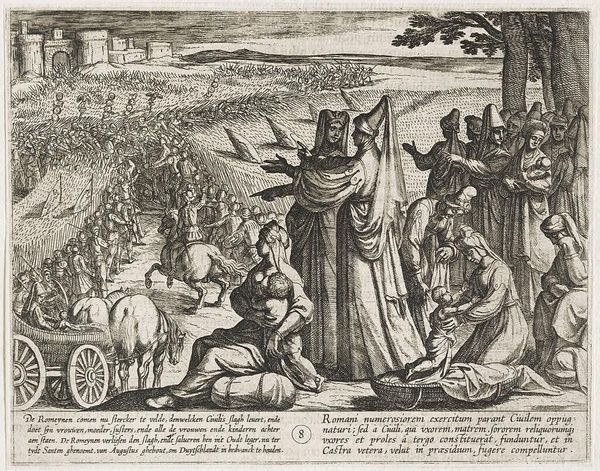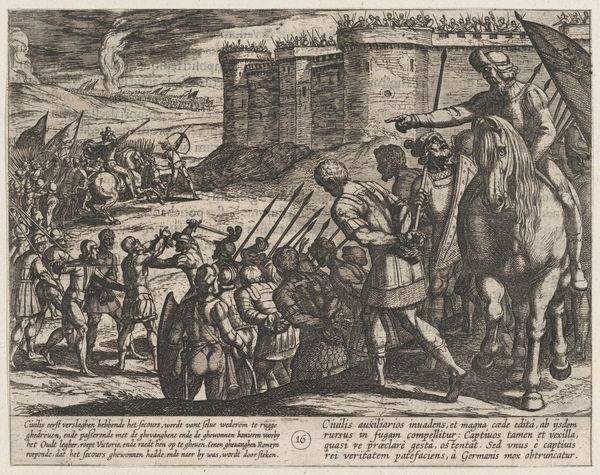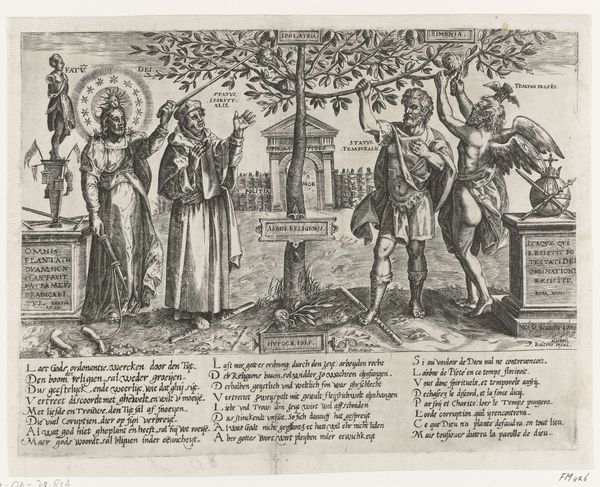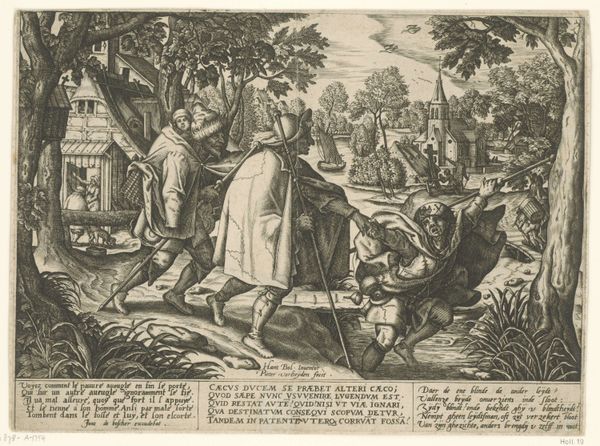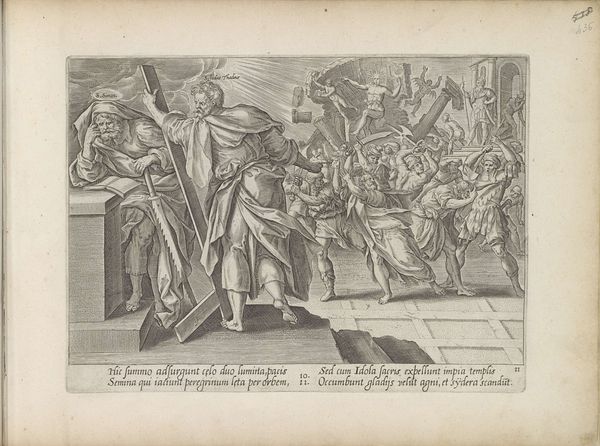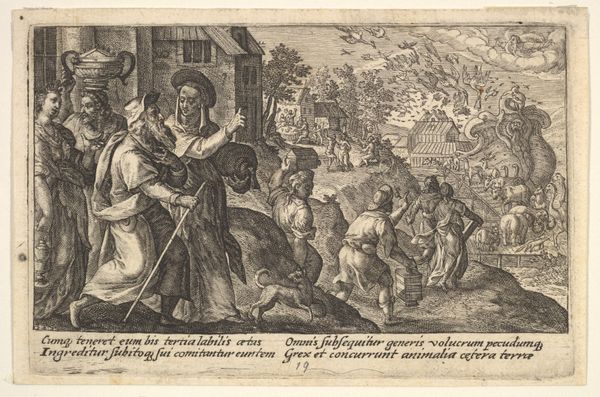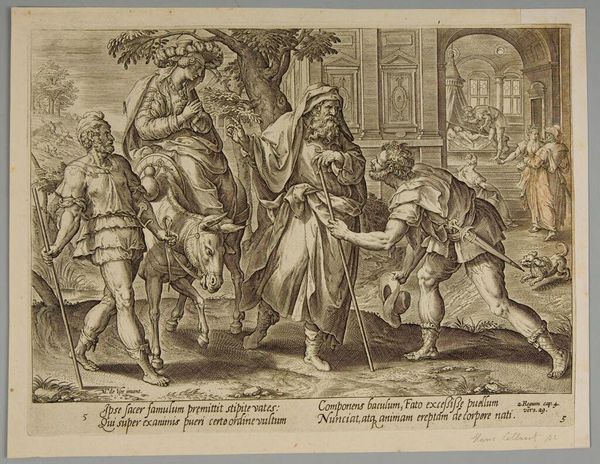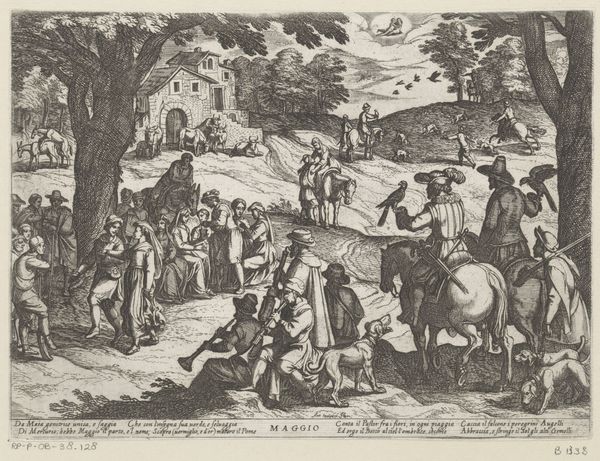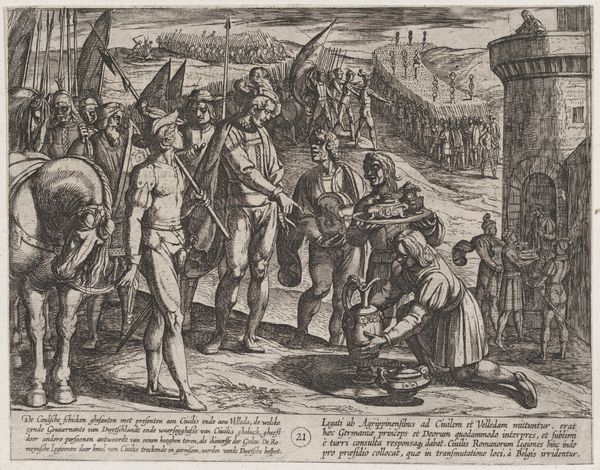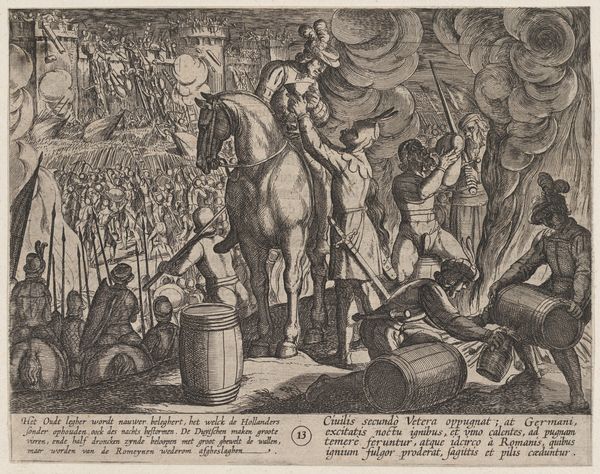
Plate 8: Women and Children Obvserve Civilis Battling the Romans, from The War of the Romans Against the Batavians (Romanorvm et Batavorvm societas) 1611 - 1612
0:00
0:00
drawing, print, engraving
#
drawing
#
narrative-art
#
baroque
# print
#
landscape
#
horse
#
history-painting
#
engraving
Dimensions: Sheet: 6 5/16 × 8 1/4 in. (16.1 × 21 cm)
Copyright: Public Domain
Curator: This engraving, dating from around 1611-1612, is titled "Plate 8: Women and Children Observe Civilis Battling the Romans," and it's part of Antonio Tempesta’s series "The War of the Romans Against the Batavians." The print is currently held at the Metropolitan Museum of Art. Editor: It has a very theatrical feel, doesn't it? The figures in the foreground are arranged almost like actors on a stage, with the battle raging behind them. The density of line work is striking, particularly in the background which adds to the chaotic feeling. Curator: Indeed, Tempesta utilizes that Baroque energy masterfully. It captures a pivotal historical moment but infuses it with drama that would have resonated with viewers familiar with similar depictions in history paintings, showing a complex play between observing, or perhaps more appropriately, mediating the scene from a seemingly safe space in the foreground. Editor: Absolutely. And I think the choice of engraving is important here. The medium allows for this incredible detail, really showcasing the artistry of the printmaking process and inviting a closer look at the texture of the lines, even simulating tones. You can practically feel the weight of worry etched into the faces of these women. Curator: It's also a commentary on the role of women in wartime. Though absent from the battlefield itself, they are portrayed as the keepers of memory, the bearers of future generations. They watch and wait and mediate what's actually happening on the ground. Editor: Exactly! Look at how their garments are rendered – with such detailed attention! And how different clothing and head coverings denote diverse familial roles. These are real material markers, underscoring that clothing isn’t just fabric but communicates something about personhood. Curator: I also think it's interesting to consider the historical context in which this print was made. The Dutch Revolt was still fresh in people's minds, and the story of the Batavians resisting Roman rule likely served as a powerful allegory for their own struggle for independence. This wasn’t just art; it was propaganda. Editor: Good point. So, on one hand, we’re examining the labor, artistry, and printing process. On the other, it makes one ponder the consumption of this kind of war imagery, and what kind of labor was necessary to make it palatable—if that’s even possible? Curator: Seeing it now really clarifies how art can act as both historical record and a highly charged statement about the politics of power. Editor: It underscores how a print, crafted from metal and ink, can become this enduring vehicle for historical narratives. It certainly leaves me thinking about art and conflict.
Comments
No comments
Be the first to comment and join the conversation on the ultimate creative platform.
